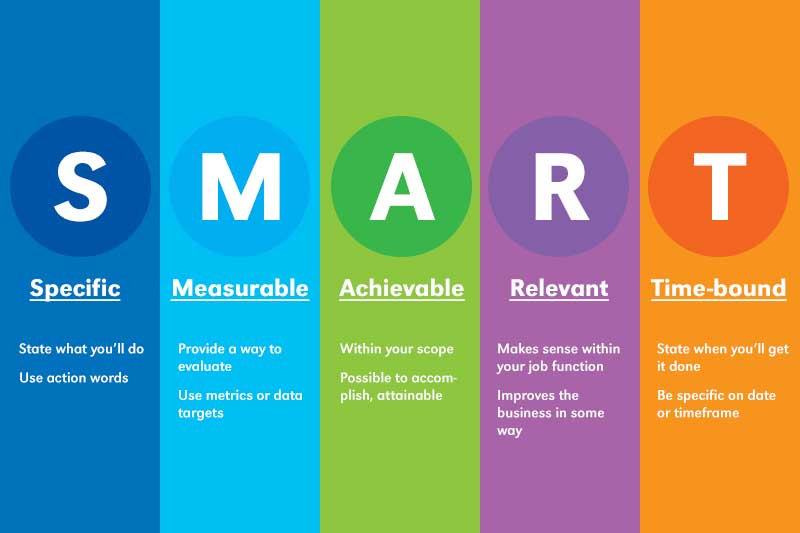Last week we laid the foundation for what HubSpot Sales Goals are and all of their capabilities. We recommend you read that article first if you want to get the most out of your reading experience.
As a short recap, sales goals are set objectives for a team to work towards. They keep reps motivated by providing incremental and encouraging targets to focus on – typically on a weekly, monthly, quarterly, or yearly basis.
Sales goals in HubSpot make it easy to track, measure, and report on how your sales reps are performing so they can keep themselves accountable, and you can ensure they are on the right track.
They also keep your reps motivated, focused, and driven. There are a number of types of sales goals you can customize and establish to ensure your team is constantly improving and impacting your business’s bottom line.
Sales goals help your business boost conversions and revenue. They can build strong, professional, and lasting relationships among your reps and prospects. So, determine which types of sales goals are ideal for your company and customize them so your reps can begin working towards achieving those targets.
This week we’re going to get into the specifics of how to set sales goals for your business with the help of HubSpot.
How to set Sales Goals
1. Choose which type of goals you’ll set.
The first step to setting sales goals for your team is to determine which goals you want to focus on. As we covered in our previous article, there are nine major types of sales goals to choose from. When deciding which goal or goals you want to focus on, ask yourself these questions to help tailor your sales goals to your specific company, needs, and team.
- What product or service is being sold?
- What are my resources? (e.g. number of reps working and any other tools my reps have access to).
- Who is our target audience and who are our buyer personas?
- How realistic are these goals (on an individual and team-wide basis)?
- What are the business’s overall goals and how can we align our team’s goals with them?
2. Make your goals SMART.

Next, make sure the goals you set are SMART — meaning they’re specific, measurable, attainable, relevant, and time-bound. With SMART principles, your goals will be concrete and tailored to your business – no matter what they’re focused on
Here’s an example of what setting SMART goals looks like.
Goal: Increase the daily number of phone calls reps have with prospects.
Specific: You want to increase the daily number of phone calls reps have with prospects. To do this, present ways to help reps manage their time and ensure they have the necessary tools to increase their number of calls while feeling supported.
Measurable: Increase the daily number of phone calls reps have with prospects by two.
Attainable: Last month, reps increased the daily number of phone calls they were having with prospects by one.
Relevant: By increasing the number of daily phone calls reps have with prospects, you’ll improve the chance of closing more deals and boosting revenue.
Time-bound: By the end of the month.
SMART Goal: By the end of the month, you’ll see a boost in the number of deals closed (and hopefully revenue), by increasing the number of daily calls reps have with prospects by two.
3. Share and implement your sales goals.
After you’ve defined your goals and have made them SMART, you can now share these targets with your team.
Your reps need to understand the goals they’re supposed to be working towards, why they’re trying to reach these targets, and the time frame in which they’re expected to do so. Otherwise, why would they feel motivated to achieve the goals at all?
Here are some ways to share your sales goals with your team:
- Sales enablement kit
- Presentation
- Knowledge base
- Web page (with details about the product’s features, etc.)
- Meeting (with other teams who can help reps reach their goals, such as product, marketing, or support)
Once you have your goals laid out, it’s time to implement them. Again, make sure your reps know the time in which they’re expected to achieve these goals, whether that’s daily, weekly, monthly, quarterly, or annually.
4. Monitor your goal progression.

While your team works towards the targets you’ve set, be sure to monitor sales goal progression.
For example, if you’ve established daily goals, you may choose to check in with reps at the end of the workday to ensure they’ve met expectations.
If the goals your reps are working towards are to be achieved over a longer period of time (monthly, quarterly, etc.), monitor progression throughout that time frame to make sure reps are on track.
Monitoring goal progression also allows you to intervene if needed. For example, if you notice an individual rep or group of reps won’t be able to meet a specific goal, you can intervene and make necessary adjustments (whether that means adjusting the goal or providing a rep with more training or a mentor).
5. Evaluate and adapt your goals over time.
Evaluate the success of your specific sales goals. You can do this for the individual reps who worked to reach the targets, as well as the sales team as a whole. Evaluating the success of your goals means you need to look at how the goals worked for your reps and whether or not they were realistic, helpful, and motivational. Then, you can decide whether or not you need to adjust any goals moving forward. Here, you can also share your findings, wins, or areas for improvement with your team. You can host regular meetings to discuss these details to make sure everyone is on the same page.
Here are are some questions you can ask yourself (and your reps) to help you evaluate the success of the sales goals:
- Did you achieve all of your goals? If not, why?
- Did reps feel as though the goals were too easy or too aggressive?
- Were the goals realistic for the amount of time in which they were expected to be achieved? Why or why not?
- Did the results of the goals positively impact the business?
You now know the different types of sales goals and how to actually set these goals for your team. Let’s review a few tips to ensure you’re setting and managing your sales goals in the most effective way possible for your team members.
Sales Goals Tips
Consider the following, universal sales goal tips while developing and implementing your targets so they are realistic, motivational, and beneficial for your team.
1. Incorporate Data

Data speaks volumes. When possible, incorporate real data in your sales goals and use data to inspire new ones. Data provides a strong basis for each goal you set, no matter the type. This will ensure your goals are accurate and achievable.
2. Don’t be afraid of small goals.
Don’t be afraid to set small goals for the near future in addition to your major quarterly and yearly goals. Smaller goals could include daily and weekly targets to keep your team on-task and focused on improving their skills for the future. These steps will help reps achieve your larger goals over time and also give them daily or weekly direction.
3. Educate and empower your sales team.

Your sales reps cannot be expected to reach their goals without being educated and empowered to do so. Whether your reps are completely new to sales or have had years of experience, provide them with the information they need to succeed.
This includes making sure they know the products they’re selling inside and out and have access to assistance from the product, marketing, and support teams if needed. Sales reps will now have the necessary tools to achieve their goals and manage their relationships with prospects, such as Sales Hub.
4. Reward your reps when they hit their targets.
When your reps achieve their goals, reward them. This will keep the team competitive, focused, and excited about their roles. The rewards you offer may resemble those of your incentivized goals (i.e. a raise, paid time off, or company-wide recognition).
Get on HubSpot with MINDSCAPE
If HubSpot Sales Goals sound interesting to you, you’re in the right place. We’re a HubSpot Platinum Partner here at MINDSCAPE and we’re happy to help you with all your questions about getting on MINDSCAPE.





